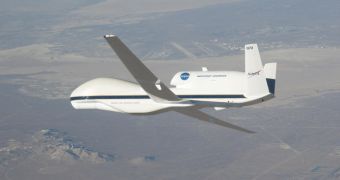Officials with the American space agency announce that an international group of scientists has just entered the early phases of preparation for the NASA Airborne Tropical Tropopause Experiment (ATTREX). This research will be conducted between 2013 and 2014.
Investigators plan to analyze a layer of the atmosphere called the tropopause, which is located between 8 and 11 miles (13 and 18 kilometers) above the planet's surface. They are especially interested in conducting this investigation in tropical areas above the Pacific Ocean.
ATTREX will be coordinated by researchers at the NASA Ames Research Center (ARC), in Moffett Field, California, including project manager Dave Jordon and principal investigator Eric Jensen.
The reason why this area of the stratosphere is so important is that variations occurring here influence the climate to a far greater extent than decadal increases in greenhouse gas emissions do. That is not to say that the latter are insignificant, but they have a tendency to cause effects in the long run.
The fact that scientists have a tough time understanding the physical processes occurring in the tropical tropopause layer is preventing them from predicting humidity changes in the stratosphere with any precision. In turn, this introduces uncertainty in large-scale climate models.
ATTREX will be conducted using one of two Global Hawk unmanned aerial vehicles (UAV) NASA owns. At this point, the drone is being outfitted with the scientific instruments necessary to conduct this study. The UAV is based at the NASA Dryden Flight Research Center (DFRC), in California.
On October 20, NASA carried out a flight test over the Edwards Air Force Base (EAFB), and found out that the instruments are in good shape. All 11 of them are currently being integrated with the Global Hawk platform in their correct flight configurations.
“The science team will return to NASA Dryden in January 2013 to begin the task of science data collection. The study will continue with deployments to the Pacific region in January and June 2014,” a NASA press release explains.
“Scientists hope to use the data to improve global model predictions of stratospheric humidity and composition. The specialized instruments include a lidar, a spectrometer, a photometer, a radiometer, a chromatograph, hygrometers and several sensors that collect atmospheric data,” the statement adds.
Developing accurate ways of predicting how climate change will affect the planet is absolutely essential towards developing the necessary policies to counteract these effects.

 14 DAY TRIAL //
14 DAY TRIAL //